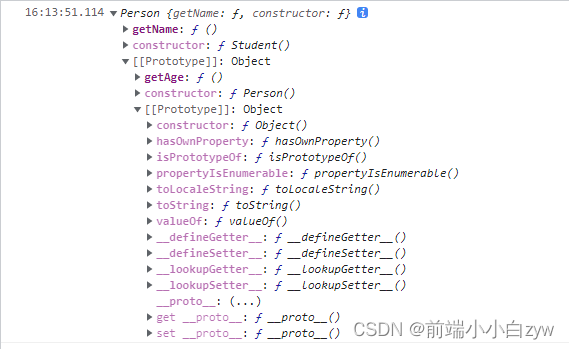在讲之前,我们先回顾下创建对象的几种方式,并且Object、new Object() 和 Object.create 的区别
①:字面量方式创建对象
let person = {
name: 'nick'
}
②:构造函数式创建对象
let person = new Object({ name: 'nick' })
③:Objecr.create 创建对象
let person = Object.create(Object.prototype, {
name: 'nick',
enumerable: true, // 可枚举
configurable: true, // 可通过Object.definePrototype修改其配置
writable: true // 可重写
})
第一和第二种本质上没任何区别,只是简化写法,说下第二种和第三种的区别:
new Object() 的过程中会继承 Object 构造函数的原型,我们可以看下 new 的过程发生了什么:
function MyNew(fun) {
// 创建一个对象
let obj = {}
// 获取参数,这里要给参数arguments绑定Array原型上的方法,并且排除第一个参数fun
let args = Array.prototype.slice.call(arguments, 1)
// 执行函数,绑定this,这里用call也一样,只不过参数类型不一样
let res = fun.apply(obj, args)
// 绑定原型,这里也可以用Object.setPrototypeOf()来绑定,也可以使用 Reflect.setPrototypeOf() 来绑定
obj.__proto__ = fun.prototype
// Object.setPrototypeOf(obj, fun.prototype)
// Reflect.setPrototypeOf(obj, fun.prototype)
// 判断是否返回对象,反之返回生成的对象
return Object.prototype.toString.call(res) === '[object Object]' ? res : obj
}
以上我们可以看到,继承了Object的原型,而Object.create第一个参数恰恰是设置原型,第二个参数可以绑定自身的属性和方法,并且设置其属性描述符,接下来,我们研究下 Objecr.create 和 Object.setProrotypeOf 的区别
备注:都是 ES5 提出的新方法
function Student() {
this.name = '小明'
}
Student.prototype.getName = function () {
return this.name
}
function Person() {
this.age = 18
}
Person.prototype.getAge = function () {
return this.age
}
Student.prototype = Object.create(Person.prototype)
console.log(Student.prototype)
通过打印结果,我们可以看到 Student 原有的原型以及构造函数全部被替换:

我们再尝试 Object.setPrototypeOf 方法
Object.setPrototypeOf(Student.prototype, Person.prototype)
console.log(Student.prototype)
通过打印可以看到,保留当前的原型对象,并且基于当前的原型对象又添加了新的 prototype

拓展:
- 1. 获取对象的原型:
xx.getPrototypeOf()
- 2. 获取对象的属性描述符:
Object.getOwnPropertyDescriptor(xx, 'xx')